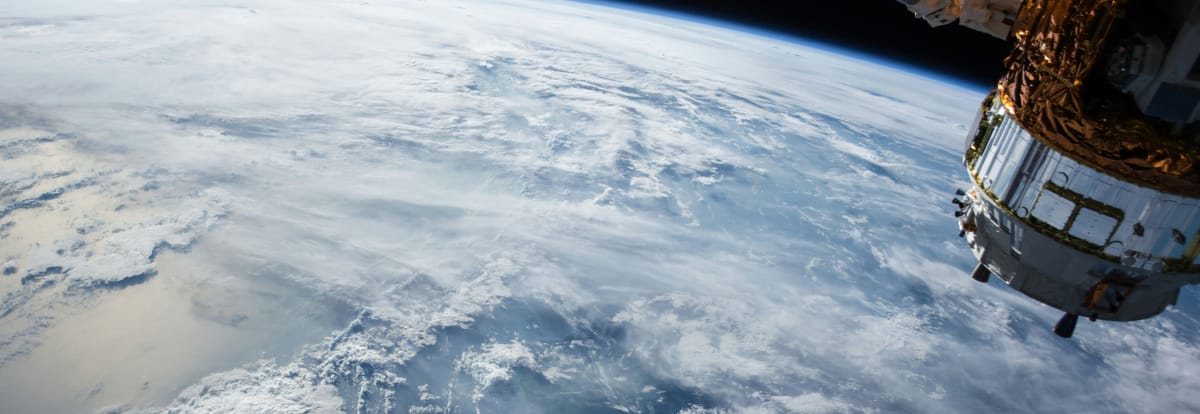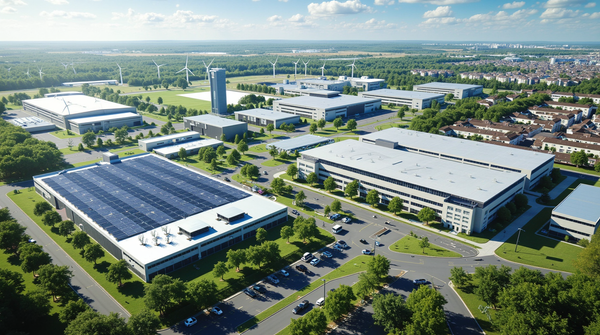How Satellite Data is Revolutionizing Renewables

How do you choose the best location for a solar or wind farm? What tools can be used to combine energy efficiency and respect for the environment? Today, satellite data is dramatically redefining these issues. 🌍 Thanks to their precision and ability to analyze vast areas, they open up unprecedented prospects for optimizing renewable energy (RE) projects. But how can this data actually transform decision-making? And what solutions do they offer to meet the challenges of our times?
Precise, powerful technology
Satellites, whether public like NASA or the European Copernicus program, or private, provide a wealth of geographic, climatic and environmental data. This information is impressively accurate. For example, a satellite can detect temperature variations of the order of a few tenths of a degree, or map a territory with a resolution of just a few meters. This data is then used to model local conditions and assess the impact of renewable energy projects.
Let's take a concrete example: a wind farm project in Spain. Using satellite data, engineers can analyze prevailing winds over several years, identify the most suitable areas and accurately estimate potential energy production. The result? Optimized siting for maximum efficiency.
Respecting biodiversity and natural resources
One of the major challenges facing the installation of renewable energy sites is their environmental impact. Here, satellite data can help meet a major challenge: choosing locations that minimize disruption to local ecosystems. In France, for example, a solar project in the Nouvelle-Aquitaine region used these technologies to avoid nesting areas for protected species and preserve ecological corridors. 🌱
Satellites can also be used to monitor water tables and wetlands. This ensures that projects do not disturb these precious resources. In Italy, a wind farm project in Sardinia was redesigned to avoid sensitive areas, while remaining close to existing electricity infrastructures. A double ecological and economic success story.
Reduce costs and accelerate projects
In addition to their environmental benefits, satellite technologies offer significant economic advantages. By identifying sites close to power grids, they help reduce connection costs. According to a study conducted in Germany, integrating satellite data into the site selection process can reduce the overall cost of a project by 10-15%. 🚀
What's more, these technologies speed up decision-making. Where it used to take months to collect and analyze data in the field, satellites provide usable information in a matter of days. This means faster project implementation, greater capacity to meet energy needs and, ultimately, a more efficient energy transition.
Simulations for informed choices
Simulations based on satellite data play a central role in this process. They enable different scenarios to be visualized: energy production, ecological impact, proximity to infrastructures. These tools help us to make informed decisions, taking multiple factors into account.
An example from Poland illustrates the effectiveness of these simulations. A solar park project in the Mazovia region used models to compare several potential sites. Using satellite data, the team was able to select a site that maximized production while minimizing costs and environmental impact. A real success story.
An ambitious European perspective
The European Union is investing massively in satellite infrastructures, notably with the Copernicus program, one of the most advanced Earth observation systems in the world. These investments reflect a clear vision: to use technology to accelerate the energy transition while respecting the environment. Each member country can thus benefit from a common database, encouraging cooperation and innovation.
Imagine a future where every renewable energy project is supported by accurate, rapid and reliable analysis. This future is already becoming reality.
Planetek Italia
This Italian start-up specializes in satellite data analysis for infrastructure projects. It offers solutions for monitoring local ecosystems and assessing environmental risks, helping renewable energy developers choose optimal locations.
Vortex
Based in Spain, Vortex provides wind simulation and modeling solutions using satellite data. This enables wind farm projects to maximize energy yield while minimizing implementation costs.
Copernicus Services
This European program provides Earth observation data accessible to businesses and governments. It plays a key role in the energy transition by providing precise information on weather conditions, biodiversity and existing infrastructures.
Eolos Floating Lidar Solutions
This Spanish start-up uses satellite and LIDAR technologies to assess the potential of offshore wind energy sites. Its solutions help reduce prospecting costs and speed up siting decisions.
And what do you think?
Satellite data is profoundly transforming the way we design renewable energy projects. They enable us to combine efficiency, respect for the environment and cost reduction. But the debate remains open. What do you see as the next challenges in exploiting this potential to the full? Do you think these tools are enough to meet the challenges of the energy transition? It's up to you to take part in the reflection! 💡



